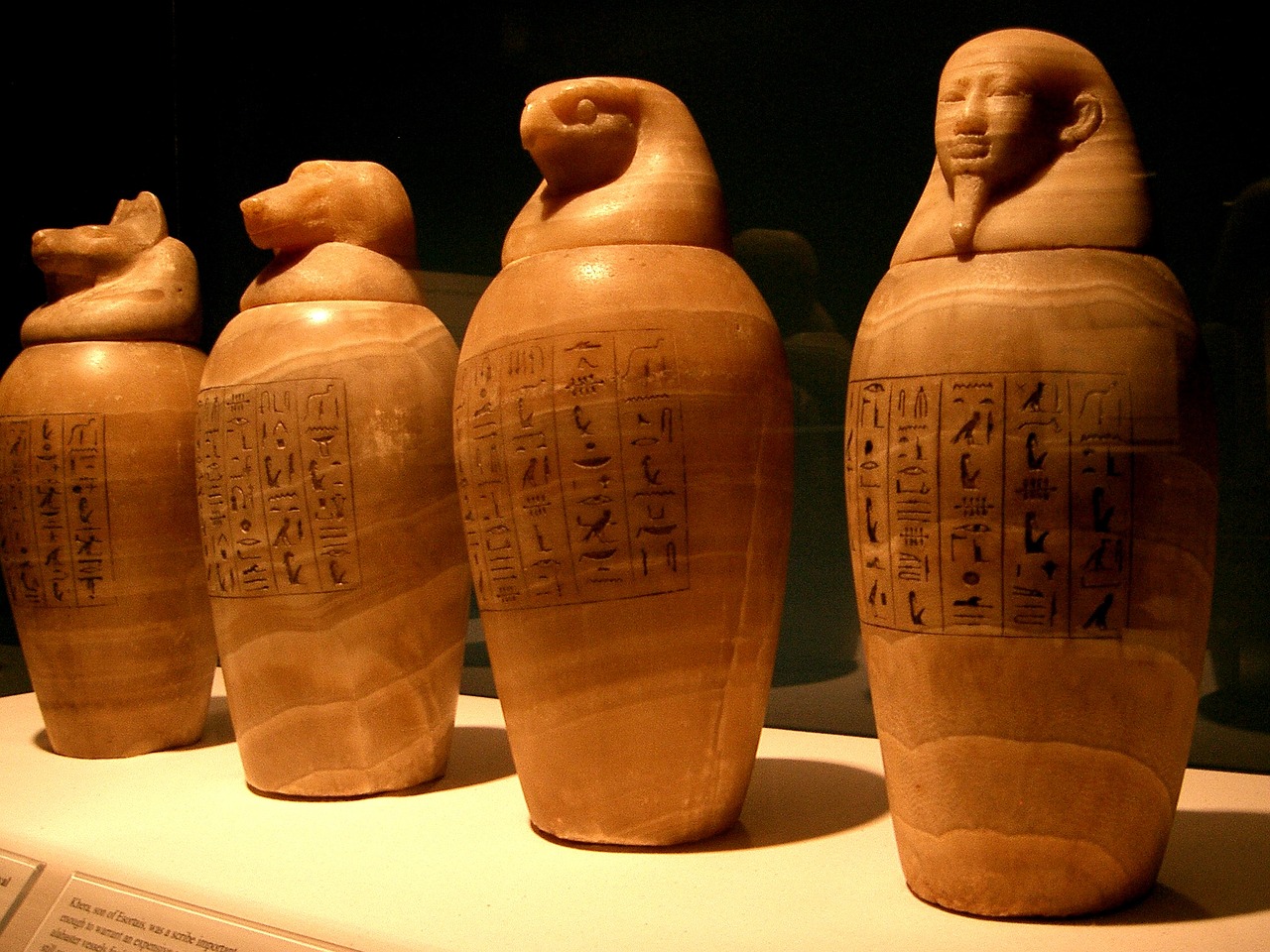Anubis, a pivotal figure in ancient Egyptian mythology, is known for his association with mummification, funerary practices, and guiding souls to the afterlife. With other names such as Inpu, Inpw, and Anpu, he embodies the essence of protection for the deceased and serves as a patron for lost souls. This deity is among the oldest in the Egyptian pantheon, likely emerging from the earlier jackal god Wepwawet, often leading to confusion between the two.
Historical records indicate that images of Anubis began to appear in royal tombs during Egypt’s First Dynasty (circa 3150-2890 BCE). However, it’s widely believed he had already garnered a following prior to this era, showcasing his protective presence sought by mourners. Anubis’s origins are thought to relate to the practical challenges posed by wild dogs and jackals who disturbed graves during the Predynastic Period (circa 6000-3150 BCE). The Egyptians, thus, favored a powerful canine deity to guard against threats to their sacred burial sites.
Representation and Symbolism
Anubis is typically represented in two forms: as a black canine—often a mix of jackal and dog—or as a muscular man adorned with a jackal’s head. The color black carries significant symbolism; it represents not only the decay associated with death but also the fertile soil of the Nile, reflecting regeneration and life. Therefore, the black jackal symbolized the guardian of the deceased, ensuring proper funerary rites and support in the afterlife, ultimately aiding in the resurrection process.
Before the emergence of Osiris as a dominant figure in the Middle Kingdom (2040-1782 BCE), Anubis was known as the “First of the Westerners,” an indication of his role as the ruler of the dead. This term references the deceased, whose souls are said to dwell in the west, the direction of the sunset. Anubis’s duties encompassed not only judgment but also the enactment of eternal justice—a theme that persisted even as Osiris eclipsed him in prominence.
Mythological Development
In earlier Egyptian lore, Anubis was considered the offspring of Ra and Hesat (linked to Hathor). However, with his integration into the Osiris mythos, he was redefined as the son of Osiris and Nephthys. Anubis became the first deity illustrated within tomb walls and invoked for safeguarding the deceased. Artistic depictions typically showcase him tending to the pharaoh’s corpse while overseeing mummification rituals or standing alongside Osiris, Thoth, or other deities during the crucial Weighing of the Heart ceremony in the afterlife.
One prominent image is that of Anubis either standing or kneeling, holding golden scales to weigh the deceased’s heart against the feather of truth. His daughter, Qebhet (or Kabechet), is also depicted, providing cool water to weary souls and comforting the newly deceased. The alliance with Nephthys, known as the “Friend to the Dead,” further underlines his protective roles for those in the afterlife.
Anubis in Religion
The name “Anubis” derives from the Greek interpretation of the Egyptian “Anpu” (or “Inpu”), which indicates decay, underscoring his early ties to mortality. He bore numerous titles beyond the “First of the Westerners,” including “Lord of the Sacred Land,” “He Who is Upon his Sacred Mountain,” and “Master of Secrets,” reflecting his vast influence across many aspects of death and funerary rites.
Anubis was central to various parts of the death experience, offering guidance and protection to souls as they navigated the afterlife. Scholar Geraldine Pinch notes Anubis’s role in the judgment of the dead, reinforcing order and punishing those who transgressed against sacred space. One myth tells of Anubis capturing the wicked god Set, marking him as a warning to others who intended evil.
Evolution of Her Worship
During the Early Dynastic Period (circa 3150-2613 BCE) and Old Kingdom (circa 2613-2181 BCE), Anubis served as the exclusive Lord of the Dead, a position gradually diluted as Osiris gained in popularity, inheriting many of Anubis’s traits. He ultimately became depicted as the assistant of Osiris, attending to the god’s body following death and presiding over preparations for mummification.
The tale goes that Nephthys, drawn to Osiris’s allure, disguised herself to seduce him. This liaison resulted in Anubis’s birth, though she left him abandoned out of fear of Set’s wrath, Osiris’s brother. Eventually, Isis adopted Anubis, penetrating the community of gods with unresolved familial ties that fueled subsequent tales.
Despite Anubis’s diminished role in certain narratives, he remained revered, acting as a guardian for Osiris and accompanying him during the judgement of souls. His need for respect from both living and deceased resonates throughout history, evidenced by the artifacts and models illustrating the mummification process found in ancient tombs.
Continuing Legacy
Priests dedicated to Anubis were typically males wearing wooden masks shaped like the god during rituals. Anubis’s primary worship site was Cynopolis (“the city of the dog”) in Upper Egypt. Nevertheless, shrines were established nationwide, illustrating his widespread reverence. His significance extended into Greco-Roman traditions, where he was equated with Hermes and later with St. Christopher, who similarly guided souls.
Anubis’s legacy as a formidable protector of the deceased ensured that he would remain an essential deity across cultures. Renowned for providing assurance during one’s death, he represented a blend of ideals, symbolizing a larger-than-life guardian figure deeply intertwined with the rituals associated with death and the afterlife. Even today, Anubis’s imagery remains iconic, appealing particularly to dog aficionados while serving as a constant reminder of his lasting impact on both history and spirituality.



